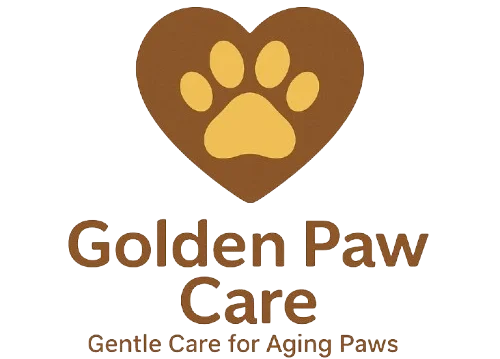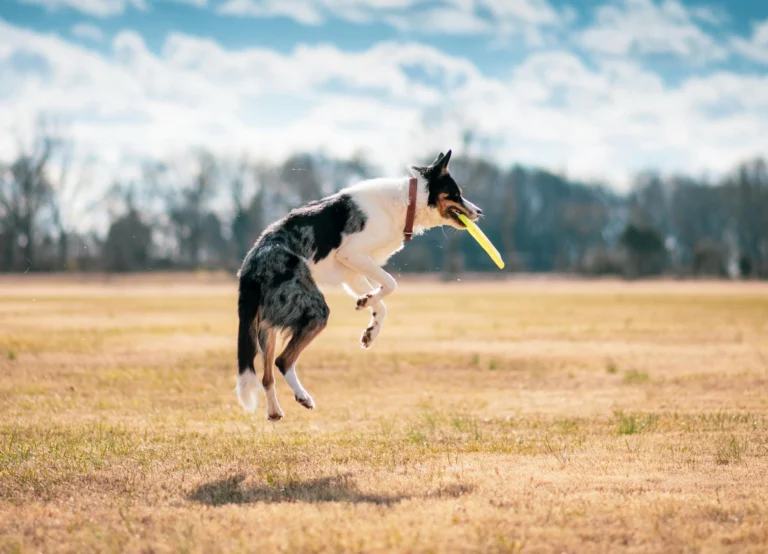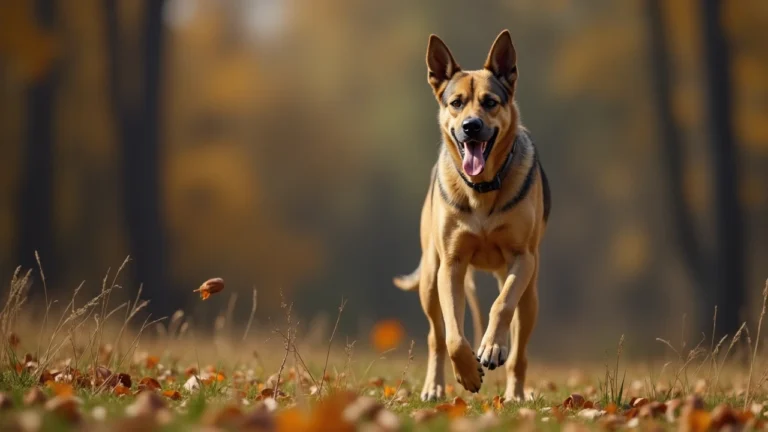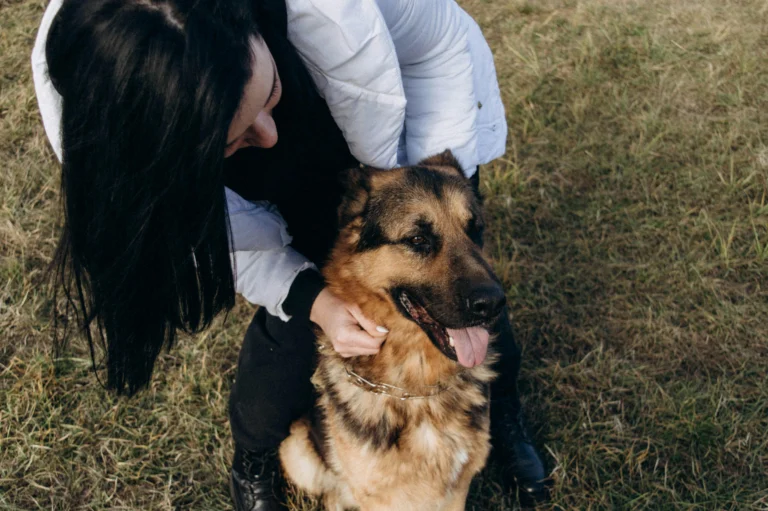Signs of Aging in Dogs
Introduction
As pet parents, we cherish every moment with our furry companions, from their playful puppy days to the calm, wise years of seniorhood. But just like humans, dogs experience physical and behavioral changes as they grow older. Recognizing the signs of aging in dogs early can make a significant difference in how you care for your pet during their golden years. Understanding these changes not only helps you provide comfort and appropriate care, but it also allows you to catch potential health issues before they escalate.
Dogs reach their senior years at different ages, based on their size and breed. Smaller dogs may not show age-related changes until they’re 10 or older, while larger breeds might begin aging around 6 or 7 years of age. Whether subtle or obvious, the transition into seniorhood often brings a range of symptoms from reduced energy and cloudy eyes to changes in appetite and behavior.
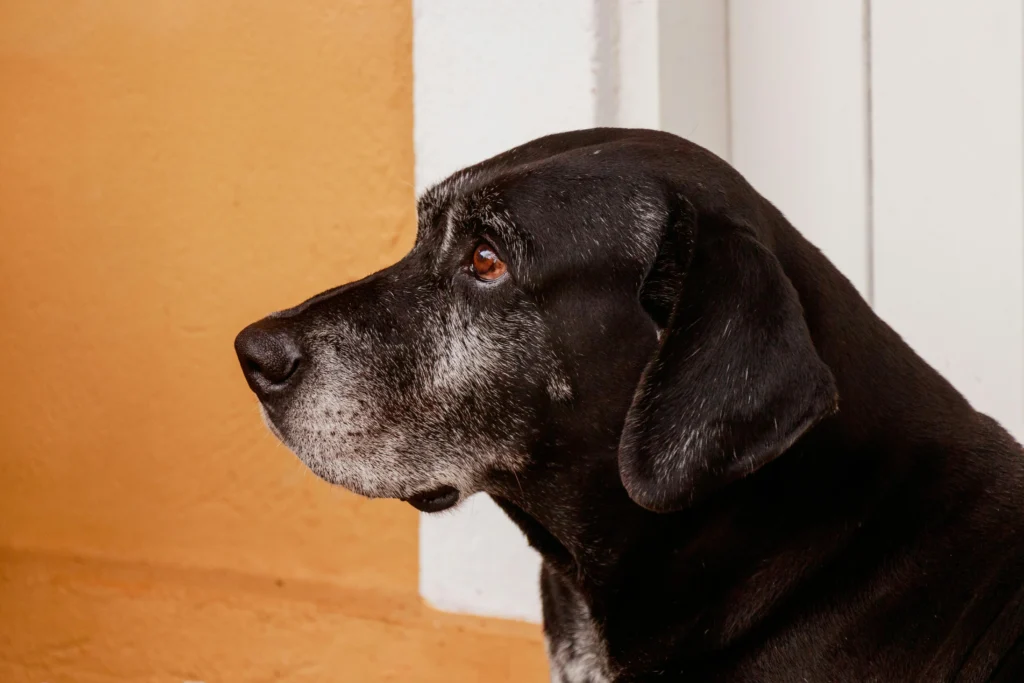
Monitoring your dog’s well-being becomes increasingly important in their later years. This is where senior dog health care comes into play. A proactive approach that includes regular vet visits, a balanced diet, and lifestyle adjustments can greatly enhance your pet’s quality of life. Spotting the early signs gives you a head start in managing age-related conditions like arthritis, cognitive decline, and dental problems.
In this article, we’ll explore the top signs of aging in dogs, what they mean, and how you can support your loyal companion through every stage of life. Whether you’ve recently noticed subtle changes or simply want to be prepared, this guide will help you stay informed and ready to give your senior dog the love and care they deserve.
Table of Contents
What Age Is Considered Senior for Dogs?
When it comes to dogs, age isn’t just a number, it’s closely tied to their size, breed, and overall lifestyle. Knowing when your dog becomes a senior is the first step in recognizing and responding to the signs of aging in dogs. Unlike humans, dogs age at different rates depending on their genetic makeup and physical characteristics.
Size and Breed Play a Major Role
Generally, small dog breeds (like Chihuahuas or Pomeranians) tend to live longer and don’t typically show signs of aging until they’re around 10 to 12 years old. The senior stage for medium breeds usually begins around 8 to 10 years old. In contrast, large and giant breeds (such as Labradors, German Shepherds, or Great Danes) may be considered seniors as early as age 6 or 7.
Breed-specific traits can also influence the aging timeline. For example, some breeds are genetically predisposed to joint issues or heart conditions that may accelerate visible aging.
Lifestyle and Health History Matter
A dog’s diet, activity level, medical history, and environment also affect how quickly they age. A well-exercised dog on a nutrient-rich senior diet with routine veterinary care will likely age more gracefully than a sedentary pet with untreated health issues. Dogs with chronic conditions, like obesity or diabetes, may show signs of aging earlier due to the added stress on their bodies.
Being aware of your dog’s typical behavior and baseline health can help you detect subtle changes that indicate aging. Once your dog enters the senior stage, based on age and health, it’s essential to transition their care routine accordingly.
Up next, we’ll break down the most common signs of aging in dogs, so you’ll know exactly what to look for as your canine companion grows older.
Common Signs of Aging in Dogs
As your dog grows older, you may begin to notice subtle or sometimes dramatic changes in their appearance, behavior, and physical capabilities. These changes are natural, but being able to identify the common signs of aging in dogs allows you to adapt their care and respond to health issues early. While not every sign means something is wrong, each should be monitored and discussed with your veterinarian when necessary.
Some symptoms, like graying fur or decreased energy, may appear gradually. Others, such as vision or hearing loss, can show up more suddenly. Keep in mind that aging affects every dog differently depending on factors like breed, size, and health history.
Let’s explore the most common and noticeable signs that indicate your dog may be entering their senior years.
1. Graying Fur and Skin Changes
A common early sign that your dog is getting older is the development of gray fur on their face and paws. This usually starts to appear between 5 and 7 years of age in larger breeds and a bit later in smaller breeds. While graying doesn’t necessarily signal a health issue, it is a clear external marker that your dog is moving into a new life stage.
Alongside graying fur, you may also notice skin changes, such as dryness, thinning, or the development of benign lumps called lipomas. These changes occur as the body produces less collagen and the skin loses elasticity with age. Some dogs might also experience more frequent dandruff or mild irritation, especially during seasonal changes.
Regular grooming and checking your dog’s skin for any irregularities are crucial for their health. Catching changes in skin texture or abnormal growths early on is vital for diagnosing possible health concerns.

2. Decreased Energy and Mobility
A noticeable drop in energy is one of the most common signs of aging in dogs. If your once playful pup now prefers to nap instead of fetching a ball or seems reluctant to go on long walks, it could be due to the natural slowing down that comes with age. This decline in stamina and enthusiasm is often the result of muscle loss, joint stiffness, or age-related discomfort.
Senior dogs may also experience difficulty with mobility. Activities that used to be second nature like climbing stairs, jumping onto the couch, or running in the yard, may become challenging or even painful. These changes are frequently caused by conditions such as arthritis, hip dysplasia, or degenerative joint disease, all of which are common in older dogs.
You might also observe stiffness after sleeping, limping, or hesitation when transitioning from lying down to standing. These signs shouldn’t be ignored, as they may impact your dog’s overall quality of life if left unaddressed. Fortunately, there are ways to ease mobility issues, including orthopedic dog beds, joint supplements, weight management, and low-impact exercise like short walks or swimming.
It’s important to distinguish between normal aging and signs of an underlying condition. A sudden or severe change in energy or movement could signal something more serious than aging alone. Scheduling a veterinary evaluation can help determine if your dog is simply slowing down due to age or if there’s a medical issue that needs treatment.
Supporting your senior dog through these changes means adjusting their daily routine to match their new pace. Offering comfort, reducing physical stress, and ensuring regular vet visits will go a long way in maintaining their mobility and overall happiness.
3. Changes in Appetite and Weight
Among the more subtle signs of aging in dogs are changes in appetite and weight, which often go unnoticed at first. However, these shifts can signal that your dog’s body is going through age-related changes that deserve your attention.
As dogs get older, their metabolism slows down. You might find that your senior dog eats less than they used to or becomes more finicky with their food. This decrease in appetite is one of the common signs of aging in dogs and may result from diminished taste or smell, dental problems, or reduced physical activity. In some cases, underlying conditions such as kidney disease, heart issues, or gastrointestinal problems can also contribute to appetite loss.
Conversely, some senior dogs may gain weight even if their food intake stays the same. This often results from lower energy and decreased physical activity. Since they burn fewer calories, they may start to store excess fat. Weight gain in aging dogs can put additional strain on their joints and organs, worsening other signs of aging in dogs like decreased mobility and fatigue.
Consult your vet if you notice your dog losing or gaining a substantial amount of weight suddenly. Routine weigh-ins, body condition scoring, and diet adjustments can help you manage your dog’s changing nutritional needs as they age.
Monitoring your dog’s appetite and body weight gives you valuable insight into their overall health. Alongside other signs of aging in dogs, these changes can help you detect and address issues before they become serious, ensuring your furry friend remains happy and comfortable in their senior years.
4. Cloudy Eyes or Vision Issues
A common and noticeable sign of aging in dogs is a change in their eyes, often seen as cloudiness or a hazy appearance. As dogs grow older, they may develop nuclear sclerosis, causing a bluish-gray hue in their eyes. While this condition is generally harmless and doesn’t significantly affect vision, it’s often mistaken for cataracts, which are more serious and can lead to partial or complete blindness if left untreated.
Cloudy eyes are one of the classic signs of aging in dogs and can be an early indicator that your pet’s eyesight is starting to decline. In addition to the physical changes you see, you might also notice behavioral signs such as bumping into furniture, hesitation when climbing stairs, or difficulty finding their food bowl or toys, especially in low-light settings.
While some vision loss is a normal part of aging, it’s important to schedule regular eye exams with your veterinarian to rule out more severe issues like cataracts, glaucoma, or retinal degeneration. Early detection is key in preserving what vision your senior dog still has and ensuring they feel safe in their environment.
At home, you can support a visually impaired dog by keeping their surroundings familiar, avoiding rearranging furniture or leaving obstacles in their paths. Adding night lights in dark areas or placing textured mats near stairs can also help your dog navigate more confidently.
Remember, declining vision doesn’t have to mean a loss of quality of life. With some thoughtful adjustments and added care, your senior dog can enjoy a safe and comfortable life in their golden years. Monitoring cloudy eyes or vision issues alongside other signs of aging in dogs ensures your furry friend gets the best care possible.
5. Hearing Loss
As dogs age, hearing loss is a common but sometimes subtle change. As your dog enters their senior years, they may begin to respond less to your voice, ignore doorbells, or sleep through loud noises they would have reacted to in the past. This gradual decline in hearing is typically due to changes in the inner ear caused by aging, much like in humans.
While hearing loss may not be immediately obvious, there are subtle behaviors you can look out for. For instance, your dog may become startled more easily because they didn’t hear you approach. They may also stop responding to familiar cues like their name or commands unless you use hand signals or physical gestures. These small shifts in responsiveness are often among the earlier signs of aging in dogs.
It’s important to differentiate between selective hearing and true hearing loss. If your dog consistently ignores sounds from various directions and doesn’t react to environmental noise (like clapping or whistles), a visit to the vet is a good idea. They can rule out ear infections, wax buildup, or other treatable conditions before confirming age-related deafness.
While hearing loss in dogs is typically irreversible, they are remarkably adaptable. Visual cues, hand signals, and vibrations can be effective ways to communicate with them. Consistency and routine become even more critical in helping them feel secure and confident despite diminished hearing.
By recognizing and adapting to this change, along with other signs of aging in dogs, you can continue to build trust, reduce stress, and keep your dog engaged. With your love and patience, they’ll continue to thrive even without their full sense of hearing.
6. Behavioral Changes and Confusion (Canine Cognitive Dysfunction)
As dogs grow older, changes in their behavior can be just as telling as physical symptoms. A particularly concerning sign of aging in dogs is cognitive decline, commonly known as Canine Cognitive Dysfunction (CCD), which is similar to dementia or Alzheimer’s in humans. This neurological issue can affect memory, learning, awareness, and behavior.
Senior dogs experiencing CCD may seem disoriented or confused in familiar environments. They may pace without direction, become trapped in corners, or gaze blankly at walls. Others may forget basic training, appear less responsive to commands, or struggle to recognize family members. Such behavioral changes may cause distress for both the pet and its owner.
Changes in your dog’s sleep-wake cycle may also become apparent. Dogs with this issue often pace or whine at night and sleep more during the day, which can disrupt household routines. Some may even forget previously learned habits like house training, leading to indoor accidents. These are all subtle but clear signs of aging in dogs that suggest cognitive function is declining.
While there’s no cure for CCD, early intervention can help slow its progression. Your veterinarian may recommend special diets rich in antioxidants, omega-3 fatty acids, and supplements like SAMe or vitamin E. In some cases, medications can improve brain function and reduce anxiety associated with confusion.
Creating a stable environment with predictable routines, gentle mental stimulation, and consistent interaction can help your senior dog feel more secure. Puzzle toys, short training sessions, and quiet time with family can all play a role in supporting their mental health.
Behavioral changes can be one of the most emotionally challenging signs of aging in dogs, but with patience, love, and proper care, your dog can still enjoy a fulfilling and comfortable life.
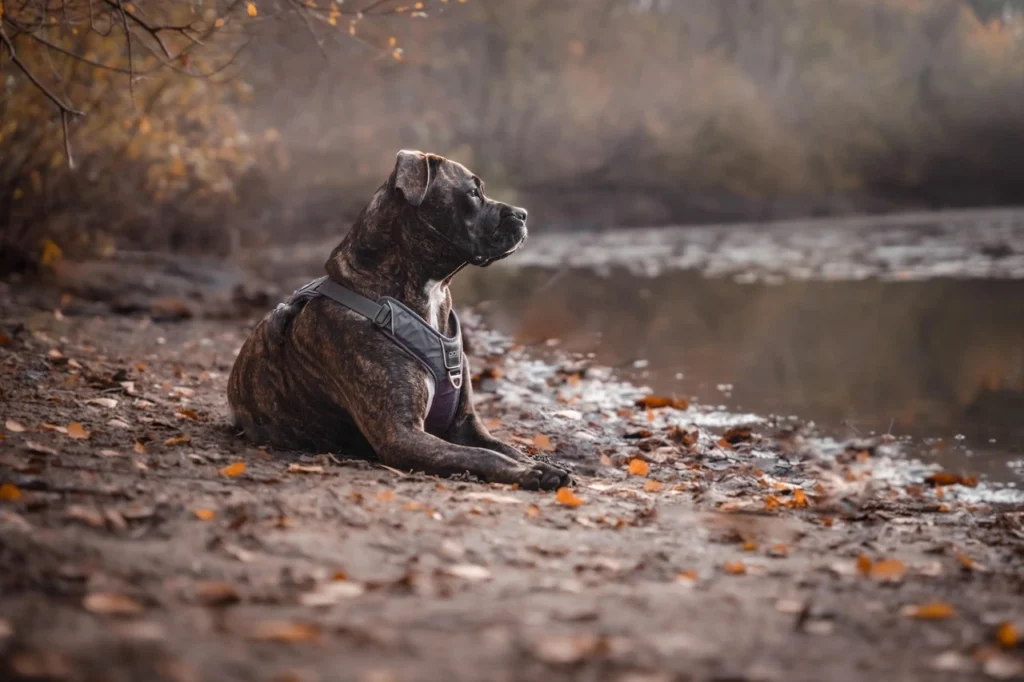
7. Increased Sleeping and Fatigue
As they grow older, dogs usually become less energetic and enjoy more downtime. One of the more subtle yet significant signs of aging in dogs is a noticeable increase in the amount of time they sleep. While puppies sleep a lot due to rapid growth, older dogs sleep more because their bodies are simply not as resilient as they once were.
Senior dogs may nap more during the day and appear less eager to engage in activities they once loved. You might find your dog skipping playtime, preferring their bed over a walk, or tiring out much faster than before. This general fatigue is a result of multiple age-related changes, including reduced muscle mass, lower energy metabolism, and joint stiffness or pain.
However, excessive sleep can sometimes be a sign of an underlying issue rather than just aging. Conditions like hypothyroidism, arthritis, or heart disease can contribute to lethargy. If your dog suddenly starts sleeping far more than usual, or if they struggle to stay awake during active parts of the day, it’s worth discussing with your veterinarian.
Helping your senior dog maintain a healthy level of energy means adjusting their routine to include light but regular exercise, a balanced diet tailored for aging dogs, and mental stimulation to keep their brain active. Gentle walks, interactive toys, and scheduled bonding time can all help your dog stay physically and emotionally well.
It’s important to provide a cozy and peaceful spot where your dog feels safe and well-supported. Providing orthopedic bedding and temperature regulation can greatly boost older pets’ comfort during sleep.
While increased sleeping and fatigue are normal signs of aging in dogs, being mindful of the changes and offering the right care ensures your dog continues to age with comfort and dignity.
8. When to See a Veterinarian About Aging Symptoms
Recognizing the signs of aging in dogs is an important part of being a responsible pet owner, but knowing when to seek veterinary care is just as crucial. While many changes in your dog’s behavior, appearance, and energy levels are expected with age, some symptoms may point to underlying health issues that require professional attention.
It’s a good idea to schedule a vet visit if your senior dog shows any of the following:
- Sudden or extreme weight loss or gain
- Noticeable pain or limping
- Confusion or disorientation
- Drastic changes in appetite, thirst, or bathroom habits
- Persistent coughing, vomiting, or diarrhea
- Difficulty breathing or excessive panting
- New lumps or bumps under the skin
These could be signs of conditions such as arthritis, diabetes, thyroid disorders, heart disease, or even cancer. Detecting issues early usually leads to more treatment choices and improved results.
Even if your dog seems generally healthy, it’s wise to increase the frequency of veterinary checkups as they age. Most vets recommend twice-a-year wellness visits for senior dogs to monitor their health more closely and catch problems early. These visits usually include a physical exam, bloodwork, and other diagnostics tailored to your dog’s age and breed.
By working with your veterinarian to modify your dog’s diet, exercise, and supplements according to their changing requirements, you can enhance both lifespan and quality of life.
While many signs of aging in dogs are normal, you should never assume that discomfort or strange behavior is “just old age.” Regular check-ins with your vet are key to helping your dog enjoy their senior years with comfort, happiness, and good health.
Conclusion: Embracing the Signs of Aging in Dogs with Compassion
Understanding the signs of aging in dogs is essential for providing the best possible care during their golden years. From decreased mobility and changing appetites to cloudy eyes and increased sleep, these changes may come gradually, but they speak volumes about your dog’s evolving needs. Recognizing these signs early allows you to make informed decisions and proactive adjustments that support your dog’s health and comfort.
The signs of aging in dogs are more than just physical, they can affect behavior, emotional well-being, and even the bond you share. As your loyal companion starts to slow down, your role becomes even more important in helping them feel secure, loved, and pain-free. Whether it’s modifying their diet, easing joint pain, or addressing cognitive changes, every small act of care contributes to a better quality of life.
It’s also important to remember that not every change should be dismissed as a normal part of aging. Some signs of aging in dogs may indicate underlying health conditions that require veterinary care. Regular wellness exams, open communication with your vet, and attentive monitoring at home are key to identifying whether your dog’s aging process is on track or if intervention is needed.
Your dog has likely spent their life offering you unconditional love, loyalty, and companionship. In their senior years, they need that same devotion in return. By paying close attention to the signs of aging in dogs, you can ensure they age with dignity, peace, and the comfort of knowing they’re cherished every step of the way.
FAQ: Understanding the Signs of Aging in Dogs
Q1: What are the earliest signs of aging in dogs?
The first signs of aging in dogs often include reduced energy levels, stiffness after waking, and a slower response to commands. You might also notice subtle behavior changes, such as increased sleeping, reluctance to play, or mild confusion in familiar environments. These early symptoms are easy to overlook, so regular monitoring is essential.
Q2: At what age do dogs start showing signs of aging?
Most dogs begin showing signs of aging between 7 and 10 years old, depending on their breed and size. Compared to smaller breeds, larger dogs often age at a quicker rate. For example, a Great Dane may begin showing age-related symptoms by age 6, while a Chihuahua might not show any signs until their early teens.
Q3: Are behavior changes normal in senior dogs?
Yes, behavior changes are common signs of aging in dogs. These can include increased irritability, anxiety, confusion, or less interaction with family members. These shifts may stem from cognitive decline, hearing or vision loss, or discomfort from age-related health issues.
Q4: Can the signs of aging in dogs be reversed?
While you can’t reverse the natural aging process, many signs of aging in dogs can be managed effectively. Proper veterinary care, a tailored diet, regular light exercise, and cognitive enrichment can help slow progression and improve quality of life for aging dogs.
Q5: When should I be concerned about signs of aging in my dog?
You should consult your vet if the signs of aging in your dog appear suddenly, worsen quickly, or interfere with daily life, such as extreme lethargy, loss of appetite, confusion, or noticeable pain. These could be indicators of more than typical aging and might require professional care.
